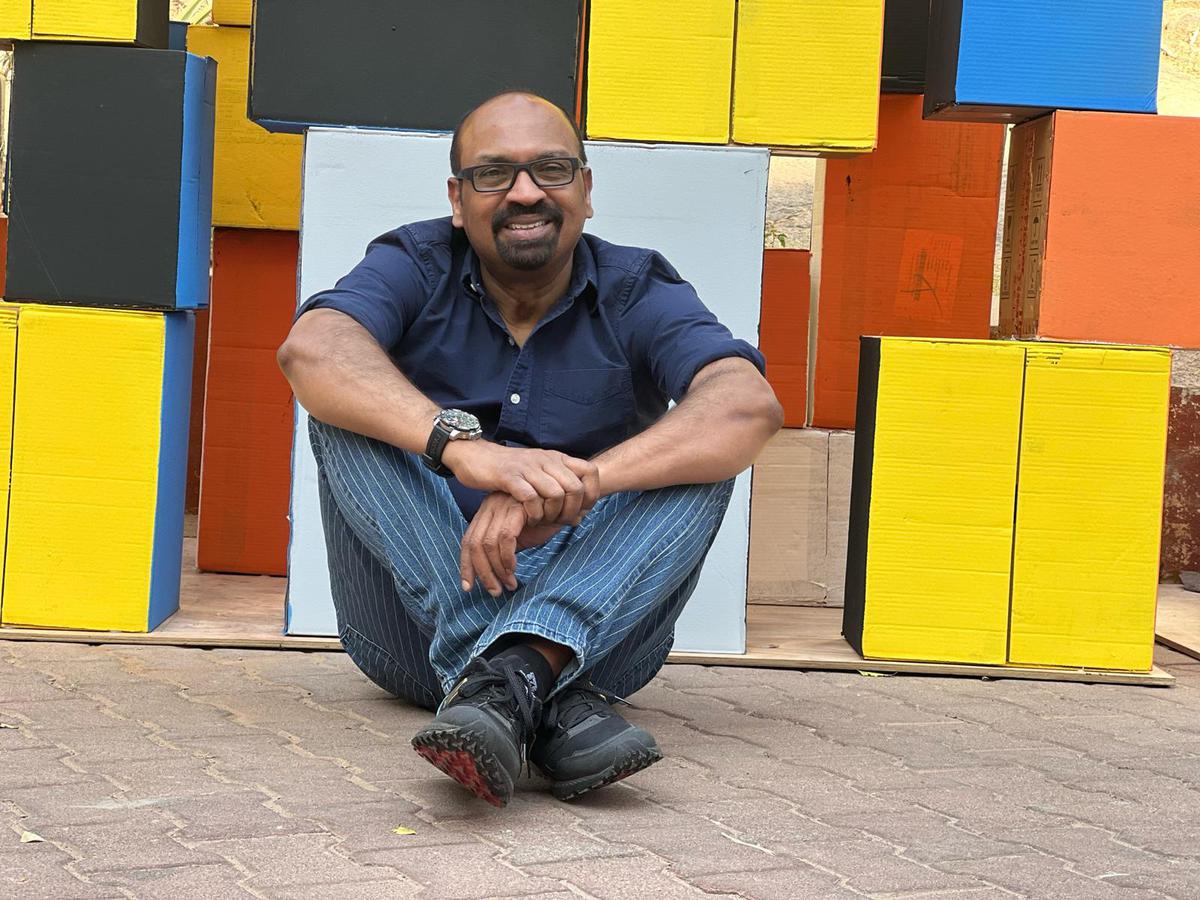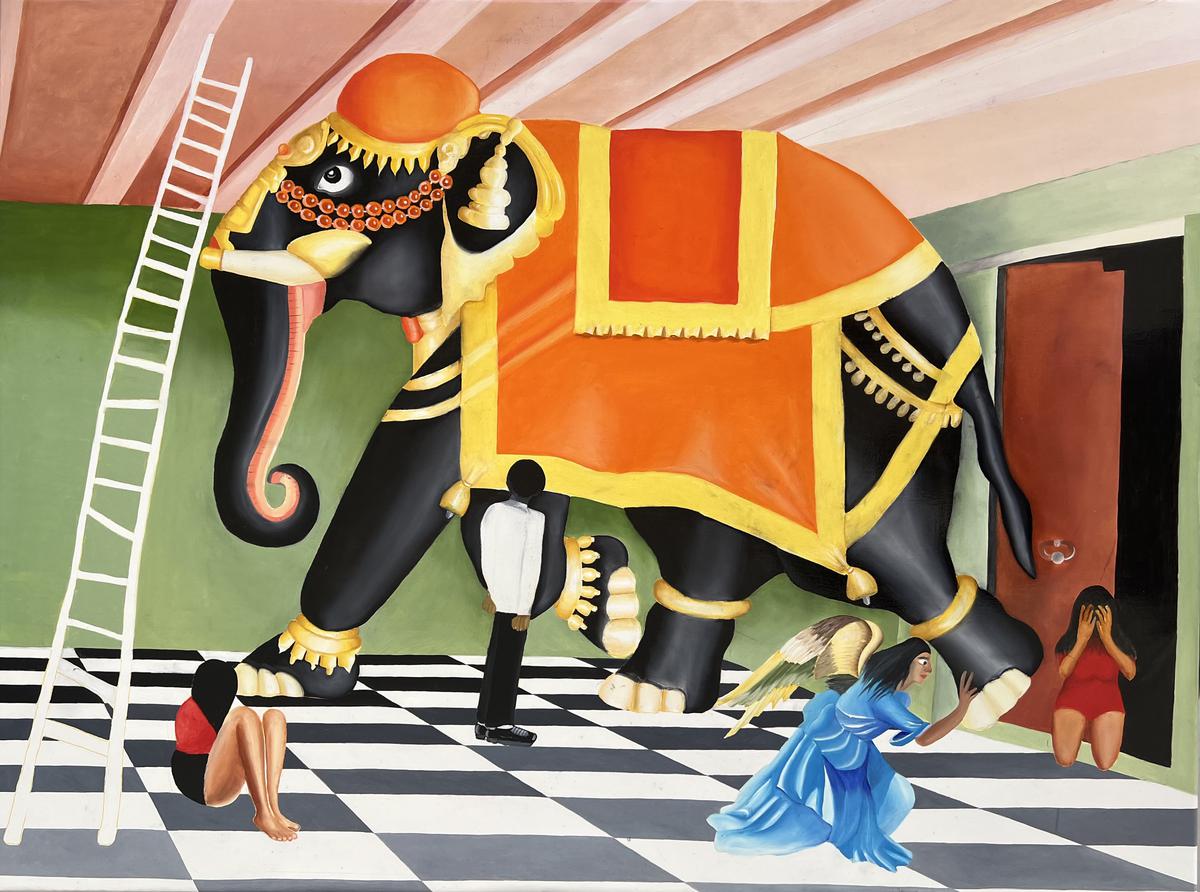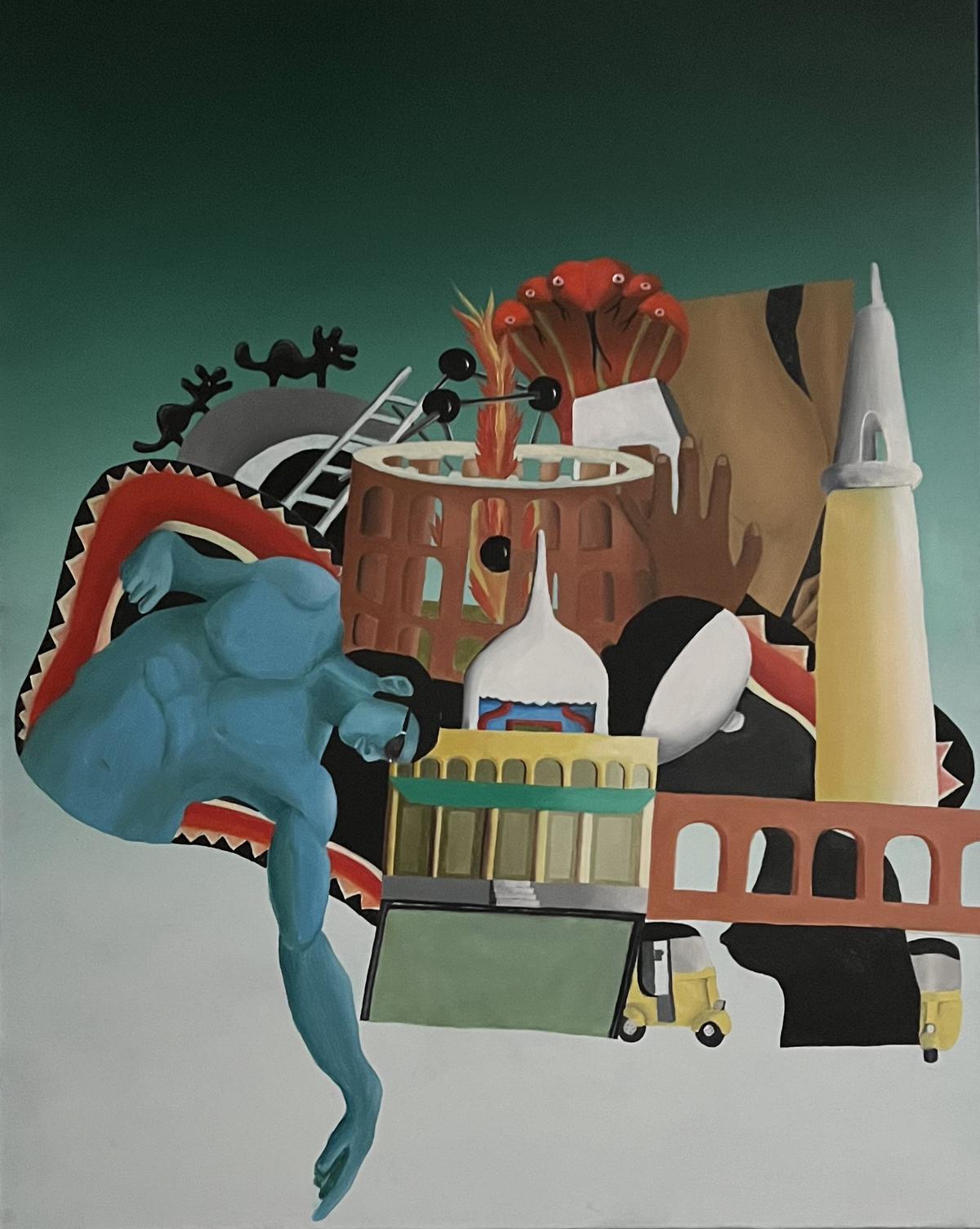At the State Gallery of Art, Hyderabad, artist Rahul Mitra takes a look at the 300 cardboard boxes he bought from the Esamia Bazar in Koti. Once he paints them, these boxes will go into designing an installation titled ‘Box City’, alluding to box-like homes in urban spaces. He has showcased Box City installations internationally for over a decade. This time, the installation will be a part of The NEWS Art Fest 2024, on view at the State Gallery till March 7. Meanwhile, Rahul’s solo exhibition of artworks titled Elephant in the Room will be on view at Gallery 78, Madhapur, from February 18 to 22.
The Hyderabad-born and Houston-based Rahul Mitra is also a writer and a scientist. He was the Director of the non-coding RNA Cancer Center at MD Anderson Cancer Center, USA, and helped develop therapeutics for ovarian cancer, which are now in clinical trials. In some of his paintings displayed as part of Elephant in the Room at Gallery 78, elements of science make their presence, for instance, through a DNA helix.
Life in a box

Artist Rahul Mitra
| Photo Credit:
Special Arrangement
Box City is a collaborative art project he has showcased at the Lawndale Art Center in Houston, Paris, Turin, New Delhi and Berlin among several other cities. People from different social backgrounds are invited to paint on cardboard, wood or metal boxes. “People are at first curious about me and what I intend to do with the boxes. Once the concept is explained, they come forward to paint,” he says. The boxes used are often the ones discarded and serve to highlight the socio-economic conditions of the marginalised in society.
In Delhi’s Khirki village, children living in the locality painted the boxes. “An older person told me the boxes won’t last long; I was game even if the installation stayed for a day. Four months later, a graffiti artist from Italy who spotted these boxes shared a photograph on Facebook. Since the children had painted these boxes, they had a sense of ownership and did not dismantle them,” Rahul recalls.
In Turin, street artists painted the boxes. In Berlin, the installation was done with the participation of refugees. “The collaborative process opens a dialogue,” says Rahul and explains how urban dwellings have all broadly become boxes, large or small. When he worked on the installation at the Portland Museum of Art for the 2013 Biennial, 150 others collaborated, and he made it a point to credit all of them. “The project gave me 150 new friends.”
Elephant in the room

Elephant in the room is not the elephant, a painting by Rahul Mitra
| Photo Credit:
Special Arrangement
Social consciousness pervades Rahul Mitra’s art. One of his paintings titled ‘Elephant in the room is not the elephant’ makes the viewer pause and look at the people in the room that also has an elephant. Gazing at the painting, one can wonder how the elephant got there in the first place. Or you can think of the conversation between the people that might reveal hidden secrets. The ‘elephant in the room’ is a metaphor for such possibilities.
In another painting featuring a man wearing a spotless white shirt, Rahul explains how the idea of wearing “the whitest of the white” shirt is of aspirational value. Snakes and ladders are also recurring motifs. He explains how the snake is worshipped as well as feared; it signifies a passage of time in its ability to shed its skin and denotes a trap, akin to the game of snakes and ladders.
The paintings also reflect gender discourse with the female form denoting resilience. “I grew up observing strong women, beginning with my mother and sisters,” says the artist. Lopsided urban development and social, gender disparities come to the fore in his paintings Garden of Inequality and Usurper’s Dream. Through art, which explores the nexus between science, gender, politics, religion and globalisation, Rahul hopes to make viewers face ‘the elephant in the room’ — the issues that are ignored.
Hyderabad musings

Garden of inequality, a painting by Rahul Mitra
| Photo Credit:
Special Arrangement
Rahul had showcased some of his artworks in Hyderabad in 2008. Returning to showcase his work all these years later, he reminisces about his childhood in the city. His interest in art, writing and science stemmed from his parents and the different neighbourhoods he lived in.
His father, Gurukulam Mitra, was a doctor who conducted medical camps in remote villages in Telangana and Andhra Pradesh. While accompanying him, Rahul got a ringside view of life in different pockets. His father was a social activist, a literary and cultural enthusiast.
Rahul remembers drawing stick figures, like graffiti, on the walls of his father’s clinic when he was barely three or four. Instead of chiding him or erasing it, his father handed him colour pencils, sketch pens and paper. “However, I never had enough pens and paper and could not afford to buy new ones. So, I would pick up discarded ballpoint pens from the streets. These pens would give my sketches varying textures.”
While the art practice began early, he remembers writing essays in high school drawing from personal observations. Having accompanied his father to medical camps, Rahul wrote a school essay explaining the need to train people in emergency medical care. “We would get down from the bus and walk 10 kilometres to reach certain villages to conduct the camps,” he recalls, adding that money was not a driving factor for his father. Everything that Rahul witnessed around him, growing up in a modest economic background, made him channel his learnings into art and writing. “Painting, sculpting and writing became my means of expression.” His writings have been published in a few literary journals.
Rahul explains that while his art discusses socio-economic issues, it is in an aesthetic realm. “Because the world is not bleak and there is progress. I think an aesthetic work of art catches viewers’ attention and encourages them to think.”
#Hyderabad #artist #Rahul #Mitras #Box #City #installation #draws #attention #urban #living



